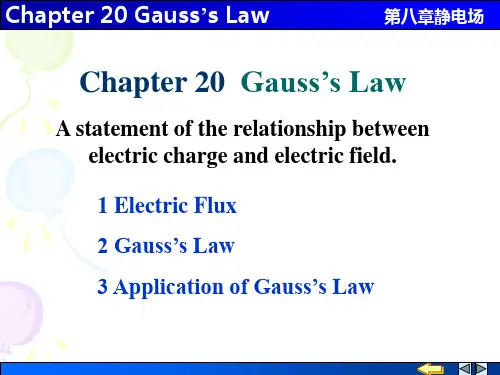大学物理英文版PPT
- 格式:ppt
- 大小:3.92 MB
- 文档页数:84
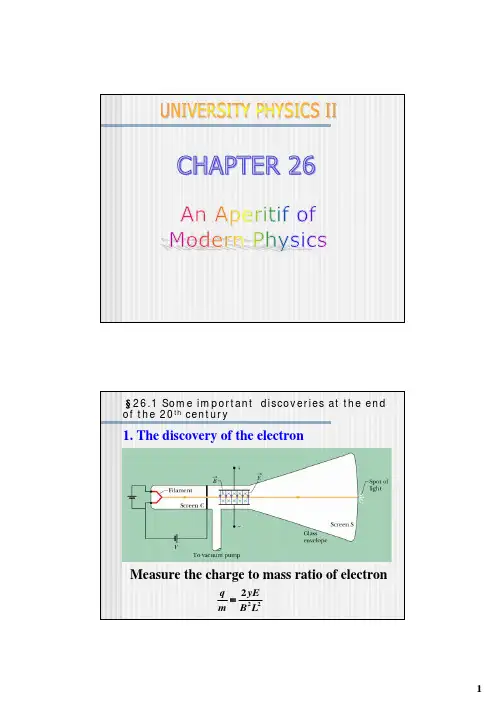
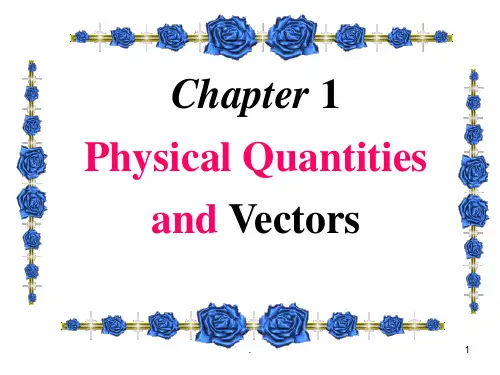
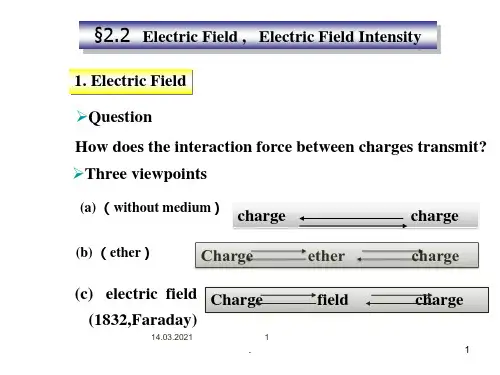

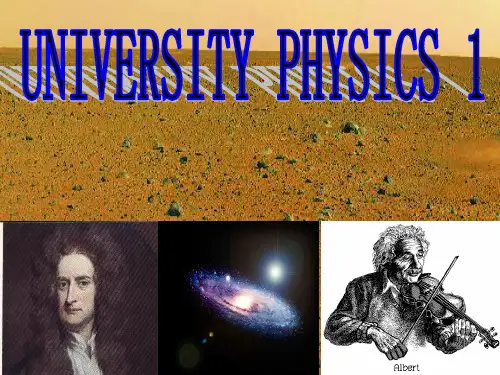
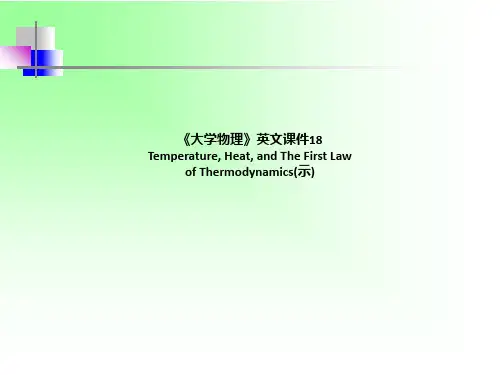
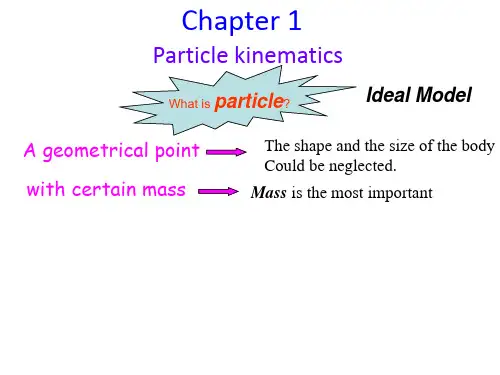
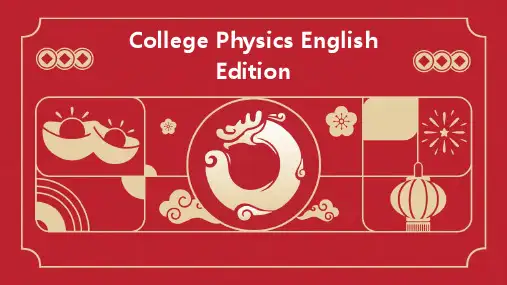
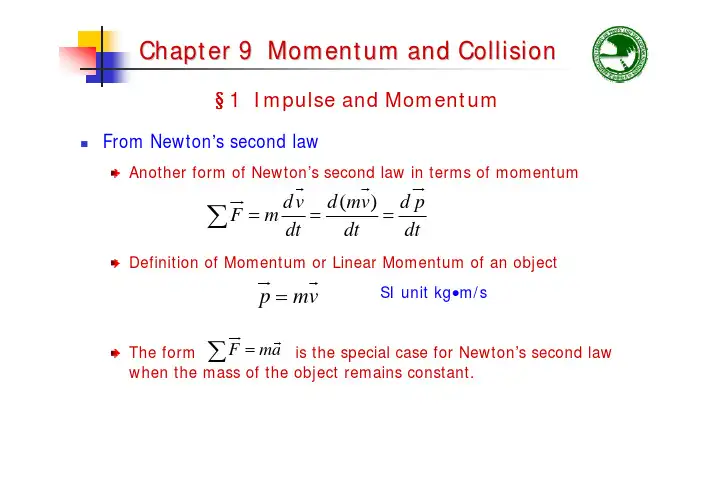
Time -averaged net forceWhen a time-varying net force isdifficult to measure, we can use a time-averaged net force as the substitute provided that it would give the same impulse to the particle in sametime interval.When a particle experiences a impact in a veryshort time, the non-impulse forces such as gravitational force and friction force are negligible compared to impulsive force.1f i t t F Fdtt =Δ∑∫J G J G ()F t ∑J G J p F t=Δ=Δ∑JG J G J GTime -averaged net force (continued)For a given amount of momentum change, we can delay the timeinterval to decrease the impulsive force.A baseball player catching a ball can soften the impact by pulling hishand back.Example:Example: Conical Pendulum.A small object of mass m is suspended from a string of length L . The object revolves in a horizontal circle of radium r with constant speed v . Determine the impulse exerted (1) by gravity, (2) by string tension on the object, during the time in which the object has passed half of the circle.Solution: From impulse-momentum theorem212122t net net t J F dt mv mv mv ==−=∫J G J G G G G The impulse exerted by gravity on the object 211222t mg t T r r J mgdt mg mgmg v v ππ====∫J G G G G GThe impulse exerted by string intension on the objectT net mgJ J J =−J G J G J G ()222222224T rmg r g J mv m v vvππ⎛⎞=+=+⎜⎟⎝⎠Impulse-momentum theorem for a system of particlesConsider a system of N interacting particles with masses m 1, m 2, …, m N .For i-th particle : the net external force the internal force exerted by j-th particle For the system of particles :According to Newton’s third law, the internal forces cancel in pairs.The total external force acting on the system:The total momentum of the system:i F J G ijf J G ()i ij iF f dt d p +=JG J G J G()i ij iij iiF f dt d p ≠+=∑∑∑JG J G J Gij ij if ≠=∑∑J G iiF ∑J Gtotiip p =∑JG J G §2Impulse -momentum theorem fora system of particlesImpulse-momentum theorem for a system of particles (continued)zerototd p J GWhich case of collision satisfies the conservation of momentum? Or conservation of component momentum?Example②Example: A wooden block of mass M 1is suspended from a cord of length L attached to a cart of mass M 2which can roll freely on a frictionless horizontal track. A bullet of mass m is fired into the block from left. After the impact of the bullet, the block swings up with the maximum angle of θ. What is the initial speed v of the bullet?Solution:(1)Stage 1:For the systemconsisting of m and M 1, the momentum isconserved in horizontal during a small intervaltime of impact.11()mv M m v =+Example: is suspended vertically with its lowest end§3 Center of MassDescribe the motion of a system of particlesby every motion for individual particles by overall motion in terms of center of mass Center of massFor the system of discretely distributed particles represented by components For the extended object with uniformly distribution of mass CM i i i i i i i i m r m r r m M==∑∑∑G G G CM CM CM i i i i i i ii i m x m y m z x y z M M M ===∑∑∑10CM 10CM lim 1, lim 11, i i N i i N i m N i N i m CM x m x dm x x dm M dm m y y dm z z dm M M →∞=Δ→→∞=Δ→Δ===Δ==∑∫∫∫∑∫∫CM 1r r dm M=∫GGExample: Find the center of mass of a uniform solidhemisphere of radius R and mass M .Solution: From symmetry it is apparent that the center ofmass lies on the z axis. x CM =0, y CM =0.The three-dimensional integral can be treated as an one-dimensional integral. Subdivide the hemisphere into a pile of thin disk .CM 11z zdm z dV M Mρ==∫∫2dV r dzπ=323M R ρπ⎛⎞=⎜⎟⎝⎠022CM 323322003cos sin (sin )233cos sin sin (sin )22313248z R R R d R R d R d R R πππθθθθθθθθθ=−===×=∫∫∫Find r , z in terms of θ.sin cos sin r R z R dz R d θθθθ===−Supplement problem: Find the center of mass of a uniform semicircular plate of radius R and mass M.Applications of center of massFor a system of discrete particlesA cannon shell in a parabolictrajectory explodes in flight,splitting into two fragments. Thefragments follow new paths, butcenter of mass continues on the original parabolic trajectory.For a rigid bodyWe can describe a rigid body as a combination of translational motion of the center of mass and rotational motion about an axis throughthe center of mass.Fig. (a) The motion of the diver is pure translation.Fig. (b) The motion of the diver is translation plus rotation.Example: A rocket is fired into the air. At the moment it reaches its highest point,a horizontal distance d from its starting point, an explosion separates it intotwo parts of equal mass. Part I is stopped in midair by explosion and fallsvertically to Earth. Where does par II land?Solution: After the rocket is fired, the path of the center of mass of the system continues to follow the parabolic trajectory of a projectile acted on only by a constant gravitational force. The center of mass will thus arrive at a point 2d from the starting point. Since the masses of I and II are equal,the center of mass must be midway between them. Therefore, II lands a distance3d from the starting point.Example:Solution II: Treat the two blocks as a whole.External force: exerted by wall on m 2.2CM2122()()d x k l x m m dt −=+2CM 212m x x m m =+2CM12CM 1222()()d x m m k l x m m m dt+−=+2CM 2CM 22120d x m k x l dt m m m ⎛⎞+−=⎜⎟+⎝⎠2CM 122cos m k x l A t m m m φ⎛⎞−=+⎜⎟⎜⎟+⎝⎠。
